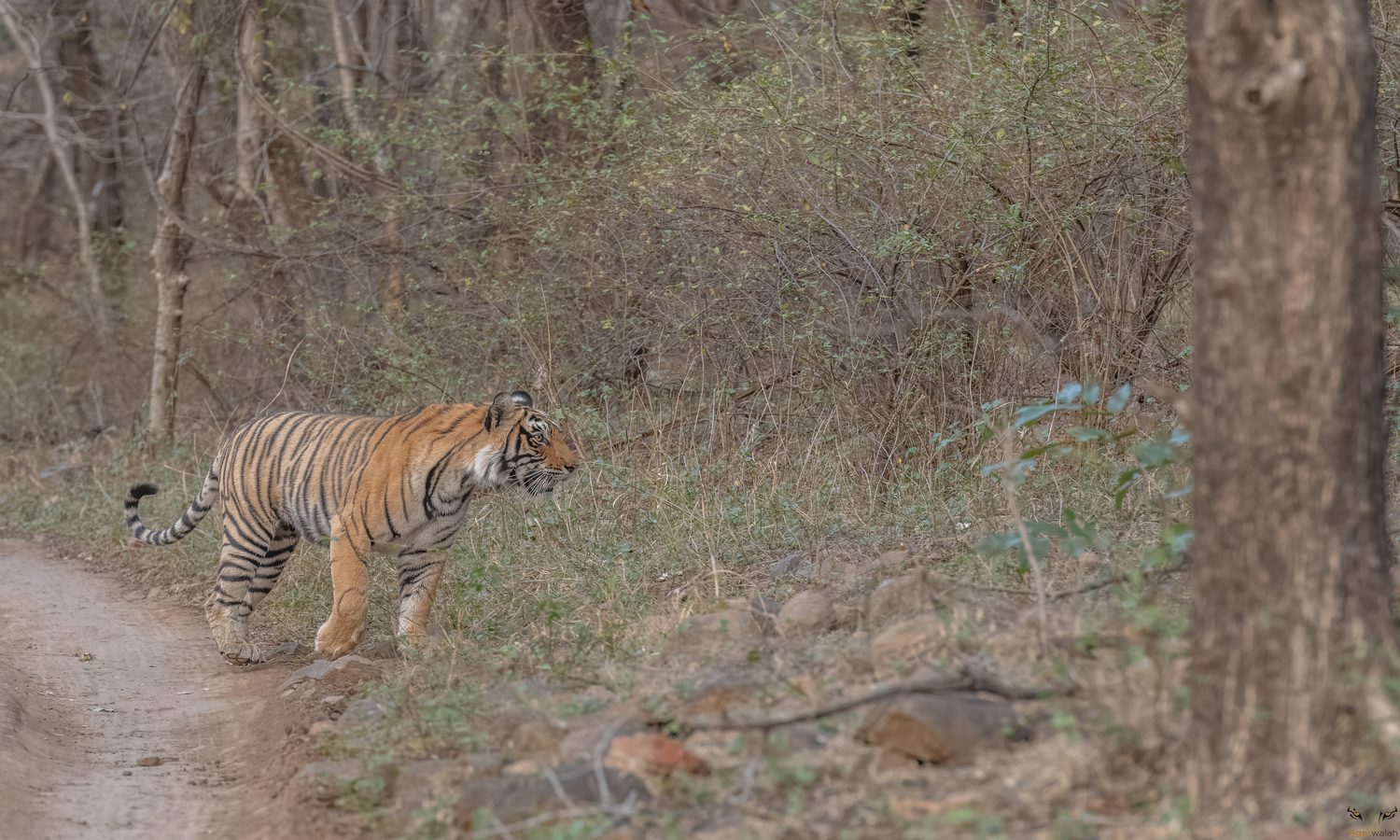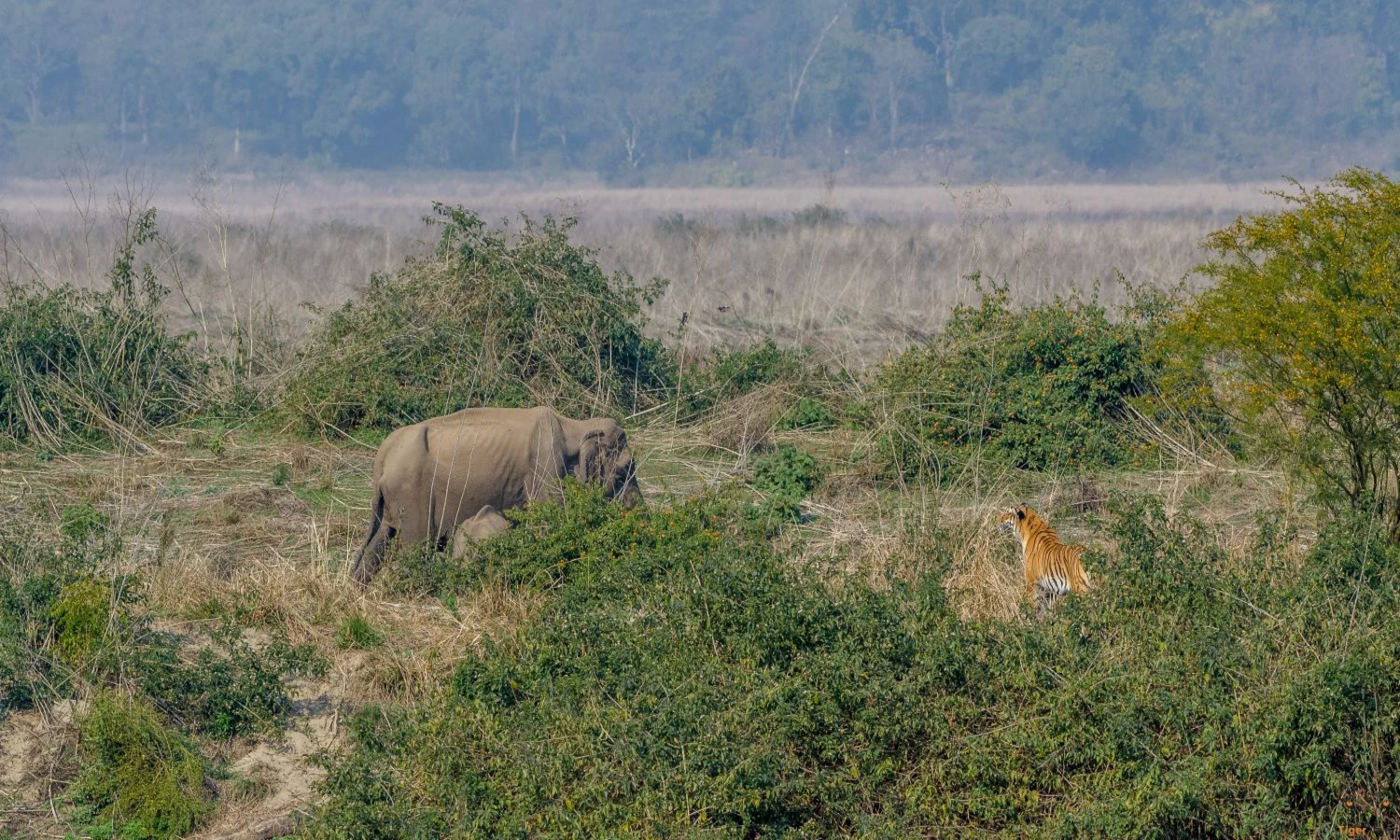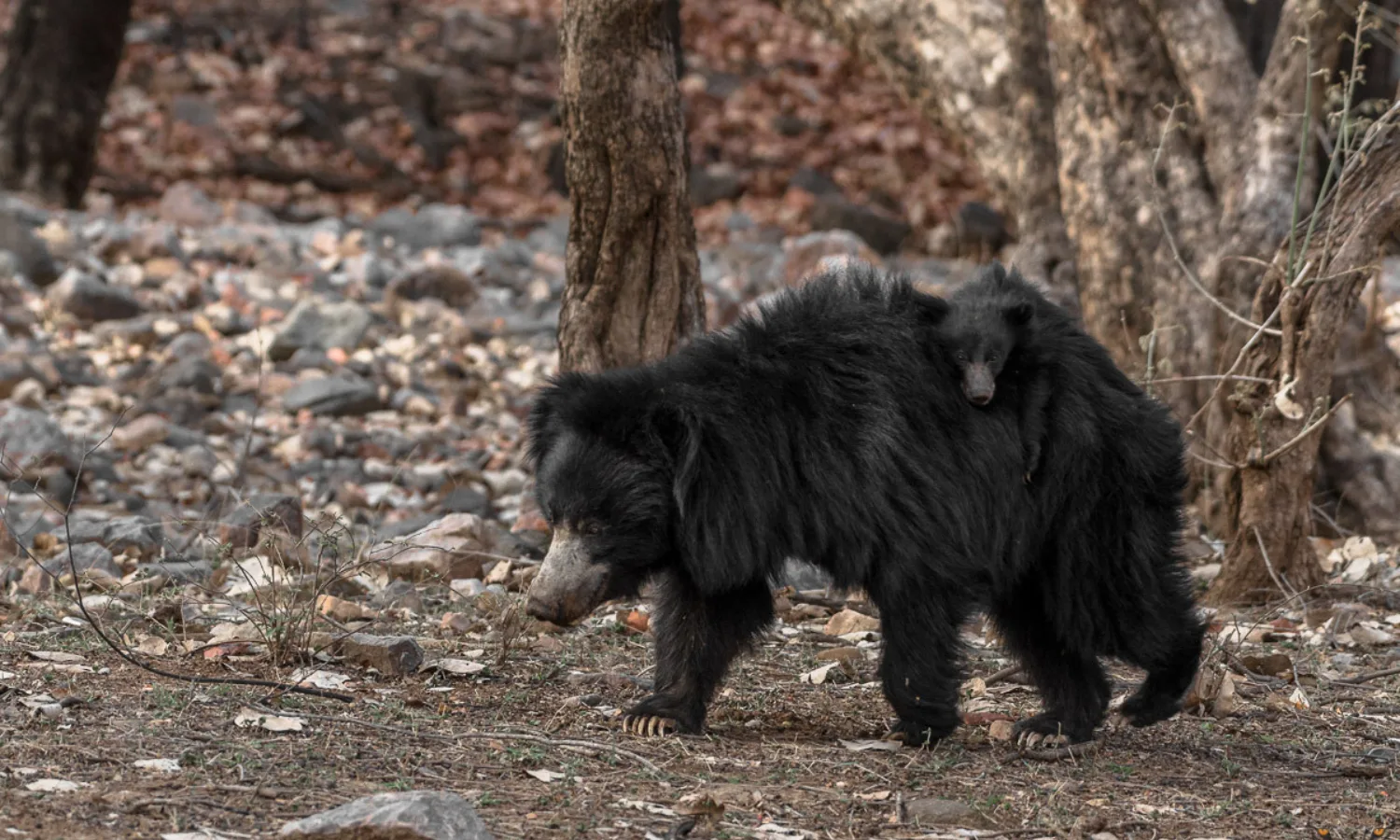Ranthambore's Last Safari Season: Tiger Tales & Tragedies

The Arrowhead Family: A Tragic End to a Loved Lineage
The end of the season brought sorrow to the hearts of many who followed the journey of Arrowhead (T-84) and her lineage. Arrowhead, a direct descendant of the legendary Machli (T-16) and a well-known tigress of Ranthambore, had always been a park favourite, admired for her striking presence and her success as a mother. Tragically, the latter part of the season saw escalating human-wildlife conflict involving her offspring.
One of Arrowhead's sub-adult daughters, Kankati, became involved in a series of highly regrettable incidents. In less than two months, Kankati was implicated in multiple fatal attacks on humans near the Ranthambore Fort area. These heartbreaking events led to intense public outcry and ultimately, the difficult decision by forest authorities to relocate Kankati to an enclosure in Mukundra Tiger Reserve. This was a devastating blow for a tigress who was just coming into her prime and was a vivid reminder of the immense pressures faced by tigers whose territories overlap with human settlements or religious sites within the park. The other cubs were relocated to Dholpur Tiger Reserve and Ramghar Vishdhari Tiger Reserve (RVTR), respectively.
Further compounding the tragedy, Arrowhead herself, the matriarch of this prominent family, was found deceased shortly after these incidents, reportedly due to bone cancer and a brain tumour at the age of 11. Her death, coupled with the relocation of her cub, marked a sombre end for a family that had brought so much joy to visitors. The scattering of her remaining cubs to other reserves, though a measure for their safety and to mitigate further conflict, signifies a profound shift in the dynamics of this once-thriving family.
This series of events serves as a stark reminder of the delicate balance in Ranthambore and the constant challenges faced in managing a growing tiger population within a shared landscape. It underscores the critical need for sustainable conservation strategies that prioritise both human safety and the long-term well-being of these magnificent creatures.
The Season's Narrative: A Flourishing Start, a Fateful End
The recently concluded safari season in Ranthambore, before its poignant closing chapters, was indeed a period of immense joy and incredible sightings for visitors and "shutterbugs" alike. As anticipated from the end of the previous season, the spotlight shone brightly on two prominent tiger families: Arrowhead (T-84) and her three cubs —two females and one male — and her daughter Riddhi's (T-124) family, also comprising three cubs. Both matriarchs, along with their playful offspring, consistently kept the sighting charts buzzing, offering unforgettable encounters with these majestic felines.
There were initial concerns surrounding Arrowhead's ability to adequately care for her growing family, given her reported health issues. However, these cubs impressively attained adulthood. This was largely courtesy of timely interventions from the forest department, which included providing live baits to supplement Arrowhead's hunting, especially as a cancerous tumour began to impact her prowess. This crucial support ensured the survival and healthy growth of her young.
Among Arrowhead's cubs, one female, Kankati (T-125), had truly begun to assert herself, displaying a promising trajectory to carry forward the family's legacy. Her bold and assertive nature was evident in her territorial encounters. Kankati was known to engage in significant skirmishes, notably with her aunt Riddhi and even with Noori (T-105), a tigress from a different lineage. Despite these intense confrontations, Kankati consistently demonstrated a fierce determination, refusing to back down easily and signalling her intent to carve out a dominant territory.
What was particularly fascinating throughout the season, amidst the frequent movements and occasional overlaps into each other's territories, was the remarkable level of tolerance displayed between Arrowhead and Riddhi. Despite being mother and daughter, and both leading their litters closely, they largely managed to avoid direct, serious conflict. This dynamic was a testament to the intricate social structures within Ranthambore's tiger population and provided a unique insight into their complex family relationships, making their frequent sightings all the more captivating for those fortunate enough to witness them.
Beyond the central drama of Arrowhead and Riddhi's families, another prominent matriarch, Noor (T-39), and her lineage ensured their presence was strongly felt on the sighting charts throughout the season. Noor, currently holding the distinction of being one of the oldest tigers in the park's tourism zones, continued to grace visitors with her regal presence. Patrolling her well-established territory primarily in Zones 6 and 1, she reliably obliged eager photographers and wildlife enthusiasts with regular sightings, a testament to her enduring health and dominance.
However, Noor's daughter, Noorie (T-105), remained considerably more elusive this season. Following the separation of her previous litter last season, Noorie has maintained a notably low profile. Her sightings were less frequent, leading to a significant portion of Zone 2 appearing uncharacteristically empty. This reduced visibility, while perhaps frustrating for some visitors, is a natural phase for tigresses as they recover from raising cubs and prepare for their next breeding cycle. Towards the end of the season, however, there was a significant and hopeful development: Noorie was sighted mating with T-123. This observation has raised strong hopes that she is perhaps ready for her next litter, potentially bringing new life back into the quieter corners of Zone 2.
In contrast to Noorie's reclusiveness, Noor's other daughter, Sultana (T-107), was a frequent and captivating sight this season. Sultana continued to command attention within her territory, and towards the very end of the period, she offered truly heartwarming glimpses of new life. On multiple occasions, she was sighted carrying tiny cubs in her mouth along the main fort road, confirming the arrival of her latest litter.
However, Sultana's older cubs from her previous litter are still navigating the challenging phase of finding and establishing their territories. They were observed lingering around their mother, a behaviour that Sultana, with her new responsibilities, is unlikely to tolerate for much longer.
Putting an end to speculations that had been swirling for the last two years, Shakti (T-111), another magnificent descendant from the legendary Machli's clan, was finally sighted with two new cubs in May. This wonderful news further increased the count of new residents. Shakti, known for her strong lineage (being a daughter of T-19 Krishna), has continued to thrive, proving her mettle as a successful mother. Further enhancing the prospects for the coming season, Shakti's daughter, T2307, who has now successfully settled into a part of her mother's territory, is also showing promising signs. According to unconfirmed reports, she might be ready to raise her own family soon. If these reports materialise, it would make Zone 4 an even more promising and active zone for tiger sightings in the next season.
While many families saw success, the past season brought a tragic turn for Siddhi (T-125), another descendant of Machli. Her three cubs, born around monsoon 2024, sadly did not survive their first year; their last sighting was in February 2025. It is believed they were killed by a new male tiger in the area, a harsh reality of territorial dynamics in the wild.
Predictions for the Coming Season: A Shifting Landscape in Ranthambore
As the monsoon rains sweep through Ranthambore, the park is entering a period of natural recalibration, promising significant shifts in territorial dynamics and the emergence of new generations. This wet season will undoubtedly mark the end of some existing family structures and usher in the exciting beginning of new ones, as sub-adults finally strike out on their own and mature tigresses prepare for motherhood.
A key development anticipated for the next season is the definitive separation of Riddhi's (T-124) cubs. The female cub, in particular, is expected to seek out her territory, with strong indications that she might occupy the erstwhile domain of Arrowhead (T-84) and the surrounding areas. This would be a fascinating continuation of the lineage, albeit with a new, independent queen.
Adding to the park's vibrant future, we eagerly anticipate new litters from several prominent tigresses. Noorie (T-105), potentially repopulating the quieter reaches of Zone 2. Similarly, Siddhi (T-125), despite the tragic loss of her previous cubs, is a strong candidate for a new litter. The promising T2307, Shakti's daughter, who has now established herself in part of her mother's territory, is also on the radar for her first litter, which would further solidify Zone 4 as a promising area for sightings. Furthermore, T-127 (Laxmi), a resident of Zones 6,7 and 9, is also expected to contribute new cubs to the park's population.
These anticipated births, coupled with the natural dispersal of sub-adults, will undoubtedly reshape the tiger landscape in Ranthambore, offering fresh opportunities for incredible sightings and continued insights into the lives of these magnificent big cats.










Be the first to share your thoughts!